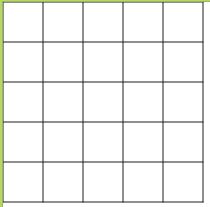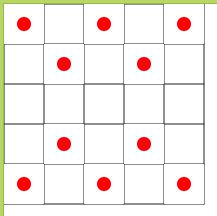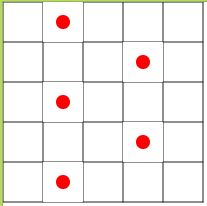I am creating a board game in JavaFX using GridPane.
There are 7 different animations which could be placed in each grid (cell) of the grid.
Initially the grid looks like this
I tested adding a simple circle to it before programming my animation insertions. And it looks like this
The nodes added are SubScenes which include TimeLine animation. Each cell size is 40x40 and the SubScene size is also 40x40.
The subscenes when added, get on top of the gridpane border lines and it doesn't look good.
What can I do so that the nodes are added below the grid lines? i.e. the gridlines are on top of the nodes.
If it is not possible with GridPane, is there anything else I can use?
class which i execute for the game
class Game {
static GridPane grid;
public void start(final Stage stage) throws Exception {
int rows = 5;
int columns = 5;
stage.setTitle("Enjoy your game");
grid = new GridPane();
for(int i = 0; i < columns; i++) {
ColumnConstraints column = new ColumnConstraints(40);
grid.getColumnConstraints().add(column);
}
for(int i = 0; i < rows; i++) {
RowConstraints row = new RowConstraints(40);
grid.getRowConstraints().add(row);
}
grid.setOnMouseReleased(new EventHandler<MouseEvent> () {
public void handle(MouseEvent me) {
grid.add(Anims.getAnim(1), (int)((me.getSceneX() - (me.getSceneX() % 40)) / 40), (int)((me.getSceneY() - (me.getSceneY() % 40)) / 40)); //here the getAnim argument could be between 1-7
}
});
grid.setStyle("-fx-background-color: white; -fx-grid-lines-visible: true");
Scene scene = new Scene(grid, (columns * 40) + 100, (rows * 40) + 100, Color.WHITE);
stage.setScene(scene);
stage.show();
}
public static void main(final String[] arguments) {
Application.launch(arguments);
}
}
class which contains animations, here I am just creating a circle
public class Anims {
public static SubScene getAnim(final int number) throws Exception {
Circle circle = new Circle(20, 20f, 7);
circle.setFill(Color.RED);
Group group = new Group();
group.getChildren().add(circle);
SubScene scene = new SubScene(group, 40, 40);
scene.setFill(Color.WHITE);
return scene;
}
}



